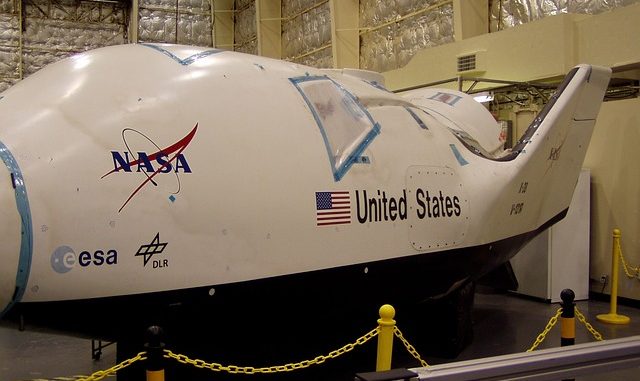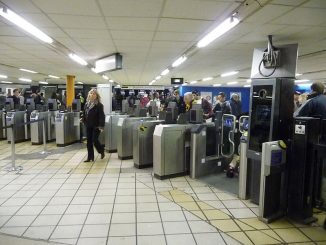
This past Friday, 10 July 2015, the Houston Chronicle‘s current transportation beat writer, Dug Begley, posted what was the second story on the ridership numbers for the Metropolitan Transit Authority’s newly opened rail lines, and the news doesn’t look good. METRO has completed the North Corridor rail extension of the Main Street rail line so that the Main Street line now extends past the University of Houston Downtown, and runs 5.3 miles in near-Northside neighborhoods through to the old North Line mall. Two other lines that have opened are the Harrisburg rail line, as well as a Southeast rail line that branches out from the north side of Downtown Houston in the direction of the University of Houston main campus and terminating at the Palm Center, a large community center southeast of the UH campus.
In summary, Begley is reporting that the extensions are getting the following ridership numbers: the Main Street rail line saw boardings of 47,000 plus in June 2015. Begley reports that the train stations north of downtown are attracting 6,000 boardings per day, up from 4,500 when the line first opened. A bunched group of stations that is shared between the Main Street line, as well as the Southeast and Harrisburg line, are attracting 2,262 boardings per day, while the not yet completed Harrisburg rail line is drawing 745 boardings per day. The Southeast rail line drew 1,712 boardings per day in June 2015.
I really didn’t want to write about this latest METRO news, as it wouldn’t take but a few minutes for some reader to find out that I’ve spent countless hours at the keyboard over the past 10 years writing about the rail issue. There is a big part of me that has gotten tired over the matter. At bottom, I lost the battle. The rail lines have been built, and I’ve seen and read enough to know that, for most rail supporters, it is the only thing that matters.
However, what prompted me to write this post was reading the statement that the combined boardings for these new rail lines were 4,719 per day, while METRO was predicting 5,927 boardings per day for their first year in operation (some 10,700 if you count the North Corridor rail line). That, ladies and gentlemen, is flat out wrong, and not only is that statement wrong, it is very wrong. Metro and the U.S. FTA forecast as part of the official environmental impact statement for these lines that the North Corridor rail line from UH downtown to Northline Mall would see 17,400 boardings per weekday in its first year in operation (which was to be 2013), with ridership increasing to 29,000 boardings per weekday by the year 2030. Likewise, the Southeast rail line was projected to see similar numbers, with 28,800 weekday trips by the year 2030. In short, what METRO and the U.S. FTA projected was that the North and Southeast rail lines were supposed to achieve some 35,000 boardings per day in their first year of combined operation, increasing to 58,000 by 2030. The Harrisburg rail line was projected to attract 7,750 boardings per day this year according to an internal study. However, one Houstonian (who currently sits on Metro’s board!) claimed back in 2006 that the Harrisburg rail line would attract 20,000 boardings per day.
Adding all of this early data up, these three new rail lines are attracting only between 10 – 35 percent of their predicted ridership estimates. Now, there is still some possible room for improvement in these numbers. Granted, school is out, ergo there may well be some improvement from students who might use these lines come September when the universities start their new year. METRO may well be able to get some numbers boosts from the well-known strategy of forcing riders to transfer to using these rail lines via eliminating nearby bus routes and rerouting other routes towards the rail lines. Much of this will depend on how prospective riders will react to METRO’s massive, system-wide reworking of the agency’s bus network that has been dubbed Transit System Reimagining. The original rail line on Main Street initially had boardings of some 11,000 per day when it started, which increased to 35,000 after nearby bus routes were terminated and bus routes were configured to stop at the rail line, requiring transit riders to transfer to the rail line. Yet, even if METRO were to achieve a similar three-fold-plus improvement over current ridership that occurred with the Main Street line, that would still amount to only 30,000 boardings or so per day, which would be some 30 percent short of initial projections (nearly half if you were to use the claim from 2006 regarding Harrisburg), and current ridership will make these three rail extensions the poorest performing rail lines in all of North America.
All of this for some $2.2 billion in local and federal tax money. If you apply the U.S. FTA formulas for grant consideration to current ridership on these three rail lines (total capital cost $2.2 billion, multiplied by 7 percent ($154 million), then add the annual operating expense of these rail lines at roughly $1 million per direction mile for $25 – 30 million in annual operating costs), it would work out to costing somewhere close to $50 every time a new rider boarded along these new rail lines.
What about the Post Oak BRT route and Richmond / Wheeler (University) rail line?
None of this early data is comforting for the prospects of the Post Oak bus rapid transit (BRT) route, nor the University rail line. Proponents of the BRT route are claiming that doing the project will result in ridership of 14,000 – 19,000 per day by the year 2018. I’ve written before that the current Post Oak bus route carries fewer than 5,000 boardings per day for the entire 19 mile route. The best information we have is that the Post Oak bus route only carries 700 boardings per day in the Galleria area itself, where the BRT route is supposed to go. Hence, to achieve the ridership levels that the Post Oak BRT proponents are claiming would require a stunning 20-25 fold improvement in ridership over current usage! As for the long argued over University rail line, the official U.S. FTA report claims that the rail line would attain 49,000 boardings per day by the year 2030, while the current #25 Richmond Avenue bus route attracts 5,800 boardings per day. I’m having a hard time understanding how a rail line down Richmond would improve ridership by a factor of eight.
Final Thoughts
As stunning as it may seem to some readers, I’m actually a fan of transit. I’ve used the London Tube system quite extensively, and have ridden rail in New York, Paris, Tokyo, Beijing, Bangkok, and Kuala Lumpur. However, I’m also of a libertarian/conservative bent by outlook, and a dead-eyed realist. Houston, like nearly all American cities that were largely built during the 20th century, has among the lowest urban population densities to be found anywhere in the entire world. Many detractors want to chalk up the hated suburbanization (or sprawl) to all kinds of different government incentives, but the hard reality is that suburbanization is mainly a phenomenon of economic affluence, with people exhibiting a marked preference for wanting to live in single family homes, should they have the incomes to afford them. The more a city or urban area sprawls, the harder and harder it becomes for transit to be meaningful or effective. I would not have been opposed to rail had I really thought that it was going to be effective, or if it were really going to somehow result in a substantial transformation of Houston, instead of being an expensive substitute for the existing bus network.
All the same, Houston is now stuck with rail, and I will say again that for many that’s all that matters.



